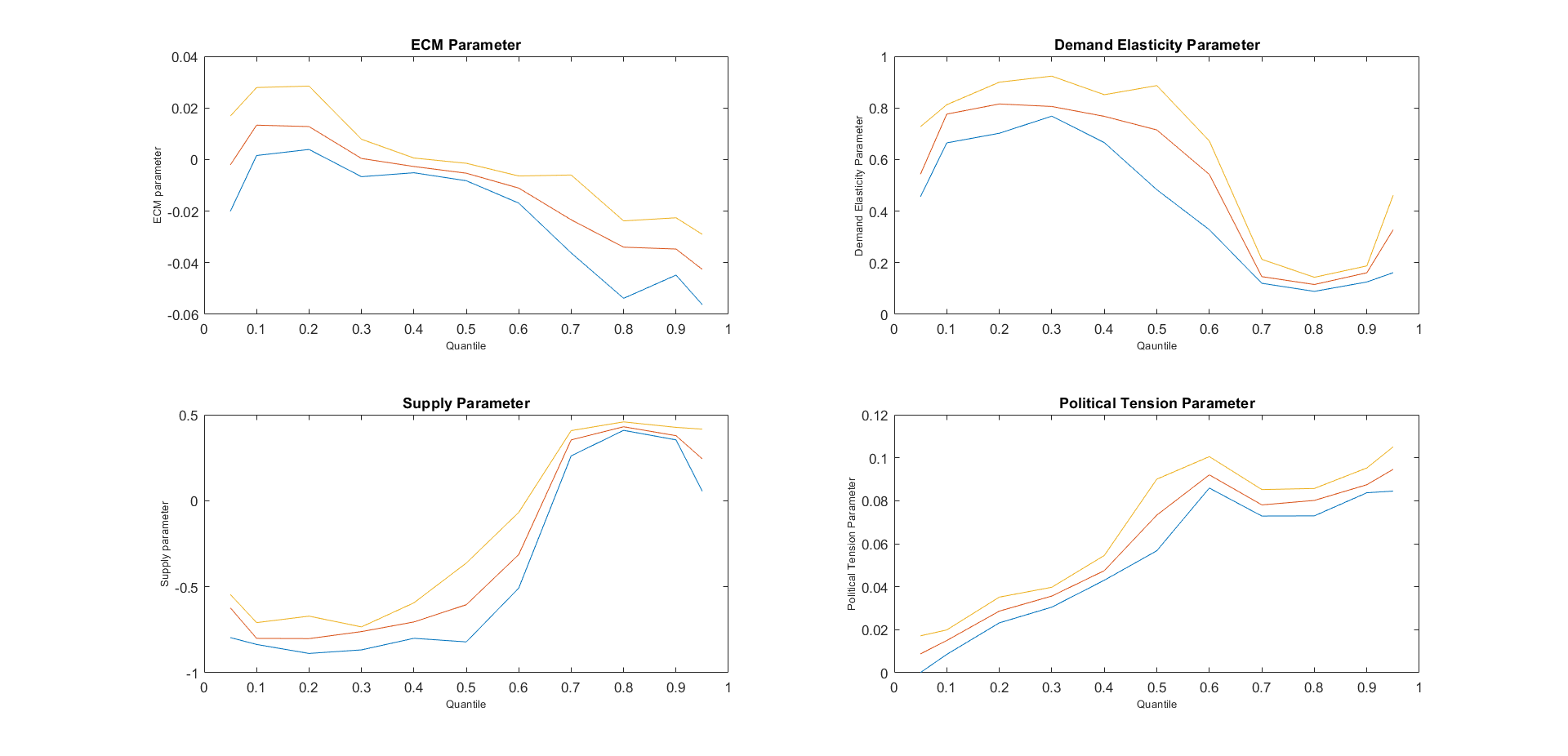NEW WORKING PAPER: This paper assesses the role of political tensions between the US and China and global market forces in explaining oil price fluctuations. To this end, we take part of the previous literature, which highlights (i) the importance of political events in explaining oil price dynamics, (ii) time-varying patterns in the oil market, and (iii) asymmetries in the impact of political tensions and uncertainty on oil prices. While this literature generally focuses on one of these features, we account for all of them simultaneously, allowing for a complete and meaningful investigation of political tensions on oil prices. To this end, we rely on quantile autoregressive distributed lag (QARDL) error-correction models, which are specifically designed to address both the long-run and short-run dynamics across a range of quantiles in a fully parametric setting. Our results show evidence of a quantile-dependent long-term relationship between oil prices and their determinants over the 1958-2022 period, which is also time-varying across quantiles: the adjustment speed toward the long-term equilibrium is faster for the highest quantiles, fluctuating between 4 and 6% in the recent period. Overall, our findings highlight the increased role played by China in the oil market since the mid-2000s.

You are welcome to download, share or comment the following working paper:
- Valérie Mignon, Jamel Saadaoui, Asymmetries in the oil market: Accounting for the growing role of China through quantile regressions (December 11, 2022). SSRN working paper: https://dx.doi.org/10.2139/ssrn.4312171

Leave a Reply